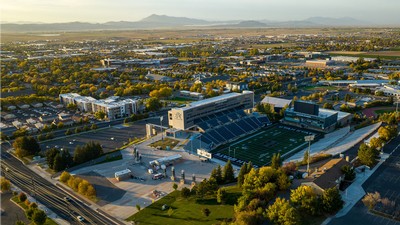'Amazonian Dark Earths' Topic for Nov. 7 Talk at USU
Terra preta do Indio. That’s Portuguese for “Black Earth of the Indians” — amazingly fertile, coal-black soil, created from ancient human activity, found in the Amazon Basin. How did it originate and does it provide evidence of long-vanished, advanced Amazonian civilizations? What could its fertility mean for tropical agriculture and are its carbon storage capabilities helping with climate change mitigation?
Utah State University welcomes renowned Johns Hopkins University geographer Antoinette WinklerPrins, who will explore these questions in a campus talk Thursday, Nov. 7.
WinklerPrins presents “Amazonian Dark Earths: Implications for Conservation and Development of the Region” as guest speaker for the Quinney College of Natural Resources’ fourth annual Distinguished Geographer Lecture. Her talk, free and open to all, begins at 6 p.m. in Room 103 of USU’s Engineering Building.
“Dr. WinklerPrins’ research focuses on environmental knowledge systems, smallholder agriculture, agrobiodiversity and sustainable livelihoods in urban and rural areas of developing countries,” says Claudia Radel, lecture coordinator and associate professor in USU’s Department of Environment and Society. “Much of her research has been conducted in the Brazilian Amazon, but she has also been involved in research projects in Kenya, Mexico and the United States.”
Program director of Johns Hopkins’ cluster of environmental studies programs, WinklerPrins says her work affords her opportunities to travel the world but the Amazon Basin remains a favored destination.
“(Much of) the flood plain of the Amazon River is really quite inaccessible by road, so you have to travel by Amazonian river boats and sleep in hammocks,” she says. “(This is) difficult in practice but pretty amazing in that it really immerses you in a very different way of life that’s eye-opening.”
WinklerPrins’ visit is made possible by support from the Association of American Geographers Visiting Geographical Scientist Program and USU’s Department of Environment and Society.
“We offer the Distinguished Geographer Lecture to the USU and Cache Valley community to highlight our geography degree program,” Radel says.
The Quinney College of Natural Resources introduced a revised, interdepartmental undergraduate geography degree program at the start of the 2009-10 academic year that allows students to choose between emphases in human-environment geography, physical geography or geographical analysis and bioregional planning.
Related links:
USU Department of Environment and Society
USU Quinney College of Natural Resources
Contact: Claudia Radel, 435-797-0516, claudia.radel@usu.edu
Writer: Mary-Ann Muffoletto, 435-797-3517, maryann.muffoletto@usu.edu
Antoinette WinklerPrins is featured speaker for USU's fourth annual Distinguished Geographer Lecture Thursday, Nov. 7, at 6 p.m. in Room 103 of USU’s Engineering Building. Her free talk is open to all. Image courtesy Johns Hopkins University.
WinklerPrins' Nov. 7 talk at USU is made possible by support from the Association of American Geographers Visiting Geographical Scientist Program.
Comments and questions regarding this article may be directed to the contact person listed on this page.







